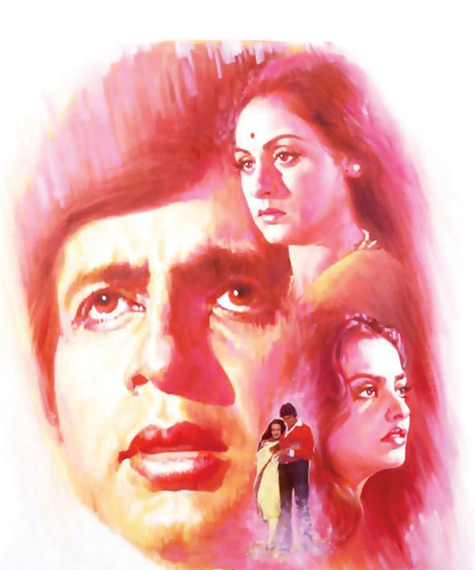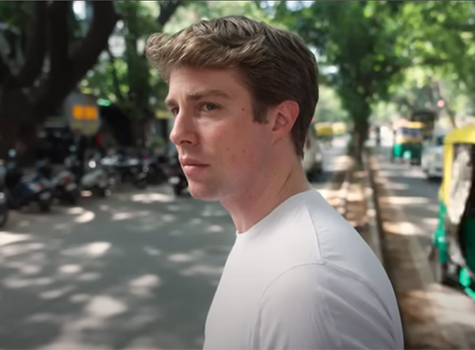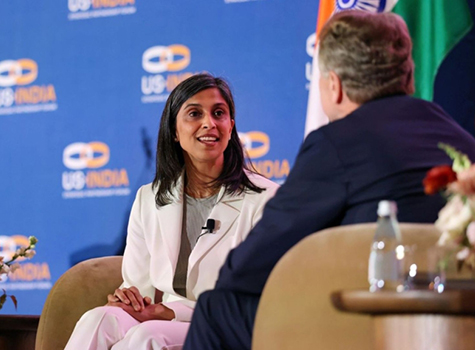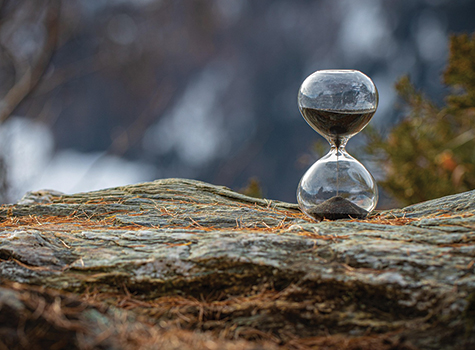By Girish Modi
 Indian cinema has come a long way in the last 70 years in promoting and popularizing music and songs of all genres. Bollywood produces nearly 400 Hindi films per year and most films are filled with songs and dance numbers. No other country in the world churns out so many movies and so many songs. In Hollywood movies songs are no longer included, except for musicals. In India, a film’s box office success often depends on how good its songs are. No wonder the producers spend almost half the budget of making entire film in picturizing songs. Stars are flown from one country to another just to shoot one or two lines! It is not surprising that nonfilmy songs have become things of the past and nonplayback singers hardly get by.
Indian cinema has come a long way in the last 70 years in promoting and popularizing music and songs of all genres. Bollywood produces nearly 400 Hindi films per year and most films are filled with songs and dance numbers. No other country in the world churns out so many movies and so many songs. In Hollywood movies songs are no longer included, except for musicals. In India, a film’s box office success often depends on how good its songs are. No wonder the producers spend almost half the budget of making entire film in picturizing songs. Stars are flown from one country to another just to shoot one or two lines! It is not surprising that nonfilmy songs have become things of the past and nonplayback singers hardly get by.
In the days of K. L. Saigal and Pankaj Mullick there were no duets because the singers’ egos prevented them cooperating with other singers. In the early days Naushad, Anil Bishwas and S. D. Burman were reluctant to write duets in their compositions. For example, “jaaye to jaaye kahan” (Taxi Driver) and “na ye chand hoga” (Shart) could have been duets. I have made 24 duets of these old solo songs on my own and people love them.
Raj Kapoor changed singers’ attitudes in the film Barsaat and included the duet “chhod gaye balam”, which was a trendsetter. It was the first romantic duet in the voices of Lata and Mukesh and was the first film for composer duo Shankar-Jaikishan. Subsequent films of Raj Kapoor like Aah, Awara, Shri 420 and Sangam had broken box office records because of romantic duet songs.
Shankar-Jaikishan and O. P. Nayyar were the most prolific composers in the 50’s and 60’s and they popularized duets more than any other composers and gave us evergreen songs that are sung even today. R.D. Burman and Laxmikant-Parelal followed suit and gave us some nice duets, too. Composers’ use of raag Bhairavi extensively in many of the duets is the main reason why duets are so popular. Lata and Asha, who were reigning queens in those days, together had sung 35 duets under Shankar-Jaikishan alone. Had it not been for them, singers like Mukesh, Rafi, Hemant Kumar and Kishore Kumar would not have become great singers. Their duets made them household names around the world.
In the middle of 1980s and continuing throughout 1990s, Alka Yagnik displaced Lata as the undisputed queen of romantic songs. There were other female singers like Anuradha Paudwal, Sadhana Sargam (Lata clones) and Kavita Krishnamurthy, but they were no competition to Yagnik. Her duets with Kumar Sanu, Udit Narayan, Abhijeet and Sonu Nigam are not only chart busters but the most melodious ever created by maestros Nadeem-Shravan, Anand-Milind and Anu Malik.
These musicians have composed all kinds of songs, be they fast-track, sentimental or dance numbers. But their forte was always melody. Most of their compositions were inspired from old time ghazals, westerns and Latino songs. Lyricists Anand Bakshi and Sameer have penned so many of these melodious songs.
I find sweetness and romanticism in Yagnik’s voice more than mesmerizing because she does not sing in high pitch (sharp) like Lata. Her voice matches and blends with voices male singers of her time more than even Lata’s and Asha’s. Hence, it is no miracle that Alka Yagnik has captured hearts of millions of music lovers (including an old timer like me) and was nominated 35 times and won 8 coveted Filmfare awards for best female singer; while Kumar Sanu was nominated consecutively 14 years from 1992 till 2005.
In Khal Nayak, Laxmikant-Pyarelal made Alka lead singer instead of Lata or Asha for the first time and won the Filmfare award! These singers had become so popular that Lata and Asha were now asking to sing duets with Kumar Sanu and Udit Narayan. I went through discography of Anu Malik, Nadeem-Shravan and Anand-Milind and only one duet of Lata-Kumar Sanu “tujhe dekha to ye jaana” (Dilwale Dulhaniya Le Jayenge) and one duet of Asha-Kumar Sanu “chehra kya dekhte ho” (Salami). Nadeem-Shravan replaced Shankar-Jaikishan, and Anand-Milind replaced Laxmikant-Pyarelal while Anu Malik replaced R. D. Burman in the 80’s and 90’s.
Even though I grew up listening to songs of the 50’s and 60’s, I have never enjoyed them as much as I have enjoyed songs of the 80’s and 90’s. Kumar Sanu-Alka Yagnik duets like “bazigar-o-bazigar” (Bazigar), “yeh dua hai meri” (Sapne Sajan ke), “aisi deewangi” (Deewana), “mehfil mein bar bar” (Soldier), “churake dil mera” (Main Khiladi Tu Anadi), “pyar mein dil diya” (Anari), “mujhse mohabbat ka izhar” (Hum Hai Rahi Pyar ke) are only a handful of songs that come to mind that blow away your senses. I can list similar Alka’s duets with Udit and Sonu too. These songs are in my repertoire along with songs from the 50’s and 60’s and I hum them constantly.
So many of these songs are peppy, lively and full of romance in every word and every note. They fill your hearts with joy and ecstasy and keep you younger for many years to come. If songs of the 50’s and 60’s were in golden era, the songs of the 80’s and 90’s are truly in the diamond era, because they embellish romanticism.
Girish Modi is an 85-year-old retired engineer who is passionate about Indian music and classical dances. He donates money to various Indian organizations and provides free photo service. Contact: girish39@yahoo.com.



